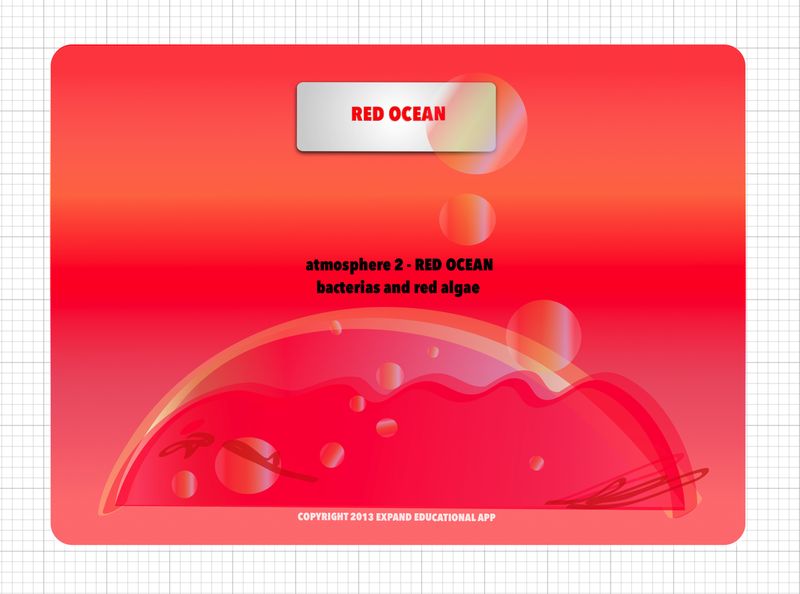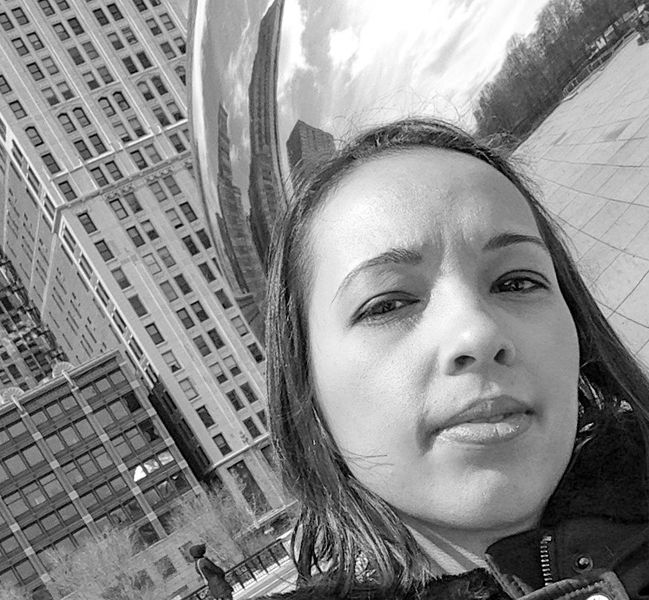Posted - 08/08/2013 The Climate of Change: Creating an IPHONE APP -by Joshua Fouts and Erica Paiva

SCIENCE, CULTURE and the PRINCIPLES OF NATURE
Among the principles of our work in the development of our "Seeding Possibilities" educational iPhone app is a desire to enhance interest and understanding of scientific research to increase youth interest in and enthusiasm for the study of science.
 Science and human knowledge of our world were born of observing nature and, perhaps, further motivated by humanity's struggles to survive. Humanity has been called upon to constantly update and refine our knowledge and perception of the world. This need for invention and reinvention challenged us to be Creative.
Science and human knowledge of our world were born of observing nature and, perhaps, further motivated by humanity's struggles to survive. Humanity has been called upon to constantly update and refine our knowledge and perception of the world. This need for invention and reinvention challenged us to be Creative.Our struggle for survival in the face of the extreme challenges presented by Mother Nature inspired humans to be creative -- to develop objects, tools, agriculture and cities.
Human creativity and inspiration created fabrics and materials for clothing; we cultivated and harvested plants to make complex foodstuffs like bread; and we domesticated animals to create a replenishing source of food and labor. Put another way, our struggle for survival created technology. We think and idealize solutions and make them reality.
Humanity's capacity for perception allows us to examine nature, to discover, study and manipulate the essence of substances and to discover how to use them in our favor in our creations. It is not only the need for survival that we have in common with other beings on this Planet. But also the continuity we share as organic living structures and beings: We share a physical constitution, the structures of our organic patters, from the size of the atoms in our cells to the cosmic structures and movement of our galaxy.
As we move beyond the historical principles of nature, and the discoveries of our ancestors, the history of language also becomes increasingly complex. Language is a cultural invention and changes through time. With visual language we have created illustrations awakening in people a deeper knowledge and understanding of history. 

Storytelling created a framework for culture, creating rules and explanations of the world around us and the people who came before and after us. Storytelling was an anchor to streamline our reality and create a fabric to weave meaning and structure in our culture.
The transformations established a culture of human imagination in its complexity and, on the other hand created by observing the scientific findings Reality and perfection and simplicity of nature, in accordance with the inevitability of time.
HUMAN IMAGINED TIME vs. THE REAL TIME OF NATURE
How does storytelling, visual language, technology, history and science relate to an educational app about climate change?
change? Our creative director Erica Paiva has worked to integrate historical information, elements of basic science, and contemporary information about climate change in her approach to the app's visual language of creative education.
This has been no small task.
Understanding and conveying the message of climate change in a simplified, creative, humanistic way is a daunting challenge. It is also a story whose narrative is in constant motion.
If we examine the history of our planet over a scale of million years, climate change may seem like an inevitable, consistently recurring and destructive theme. Meanwhile, the recent history of climate change, delivered through the prism of modern media and journalism casts climate change across a wide range of polemics ranging from declaring it to be imaginary; a source of panic and terror; or something else entirely.
It is a topic confounded by time and history.
One way we have sought to clarify our understanding of the polemics is by better understanding the layers of science involved in understanding the changes on Planet Earth over time and its relationship to culture and storytelling.
Paleontologists have defined two distinct concepts: climate variability that has occurred throughout the history of the planet; and climate change, which is the result and consequences of humanity's impact on the natural functioning of the planet. Today, humans may be simultaneously concerned with how to explain and survive these two concurrent realities.

The importance of science and the need to understand science to explain the changing world around us has become even more critical. Science helps us understand and attempt to predict movements and contextualize the past changes in the world relevant to where we are now. Science helps us understand history and time.

Thus to make our app educational we have been looking at time and history across both geological scales and that of human cultural memories and stories.
Our project began with a trip to the Amazon to meet with a tribe of indigenous people to understand their relationship to Climate Change. And it will honor that point of entry to this artistic work in progress.
The scale of time that science uses relevant to that that culture uses can be the difference of billions of years. Humans, in turn, have expanded into billions of human beings.

With that as background, I am pleased to provide the below blogpost from our project's creative director Erica Paiva who has directed and designed the creation of the prototype of the app. I hope you will find her intellectual and artistic work as interesting and relevant as I do.
- Joshua Sheridan Fouts
THE IMPACT OF CLIMATE CHANGE ON MODERN CITIES AND CREATIVE WITH REALISM: TOWARD FUTURE BIOCITIES
By Erica Paiva, Creative Director
| 1 |
 A single cell cannot operate fully without respecting its integrated function in the human body. The individual part must respect the whole.

A single cell cannot operate fully without respecting its integrated function in the human body. The individual part must respect the whole.
Individual perception of groups, communities, groups of countries and groups of humans on the planet - singly or interdependent - are useful when considering what is possible within the context of everyday life, at home, within the family group or working group, within the neighborhood, and in terms of the small individual actions and thoughts that may cause consequences to the broader human populace who share the planet.
The issue becomes a political and economic issue when we consider the actions of industrial and economic leaders, and what can be rethought and adapted in terms of more sustainable production technology, social responsibility, and environmental awareness, and the right to dignity and quality of life for all people and living beings on the planet.
The focus of discussions around climate change have been extended and expanded to the need and urgency to adapt and re-invent the structures and design of cities, and especially of urbanism.

To move forward the current paradigm and understanding of the impact of climate change on the industrial cities of the past, concurrent with the consequences in which we are presently immersed, there is a need for practical and creative approaches to understand and address these problems.

The context of the current socio-economic, political and geological global awareness of the ecological interdependence of all (current and past) living beings, in the context of our planet, needs to take into account advances in phenomenological psychology and discoveries of human perception.
The art of practical, creative and strategic urban planning can begin to address the current paradigm of human actions that are and have been harmful to the planet, which is connected to a lack of accountability with respect to the living beings harmed on the planet, as well as that of future generations, especially as this pertains to the right to a quality of life, peace and healthy environment of all beings.
The indices of noise pollution, visual pollution, toxins in food, toxic air, water, agriculture, mining and energy production, the changing balance of global temperature, and waste of all kinds, create an endless list of problems. This affects the whole planetary environmental system and impairs the functional movements and systems that maintain Life.
The artwork on this project attempts to emulate, address and incorporate the continuity and steady progress through time as humans have worked to develop methods of competition or selection of creative ideas promoting the ideas of responsible inventors, engineers and architects working to preserve and maintain life. These solutions and ideas may be the work of engineers, planners, biologists, or scientists guided by the principles and ethics of a new geopolitics, conscious and integrated with the right of quality of life and peace for all human beings today and in future generations.
 |
| Expand app character design by Erica Paiva |
CHANGE MEANS MOVING: THE BEGINNING OF LIFE
Ancient human survival we can argue was largely preoccupied with concerns between one community and another, and the subsequent destruction we inflicted on each other through wars and massacres. Now, unprecedentedly, humans are faced with the challenge of the extinction of life on a planetary level, something that has become a problem of the whole human community.With this project we have been called to reflect on innovative projects that awaken an interest in and understanding and perception of fundamentals of science with the goal of reaching the greatest number of people worldwide. We also looked at stakeholders in collaborative construction of voluntary new structures for a better world, and how to think creatively to improve living conditions for people in general, through awareness and appreciation of scientific insight.
Time was once considered a "god," a terrifying face to the imagination of ancient societies and their and myths; but Time was also regarded as a master of perfection and balance to the smooth functioning of the world around us. This balance is the basis of scientific insight, and human consciousness.
Scales of time and its measurement were expanded to a notion of billions of years. In a similar way, the number involved expanded to billions of humans on the planet. And here we have a major expansion of the meaning and significance of time in the history of culture.
Therefore, writing a paper on climate change leads our thoughts and ideas into the significance of the changes of habits, customs, and to cities, necessary to sustain life.

Creativity at work is human action that can be used to build a world within a Reality with more dignity to the greatest number of people on the planet.
Therefore, the objective of this creative proposal is to contribute to an update of values, and seeks innovative and real ways of building new cities; and ways of living with nature more consistent with the climate changes that are occurring on a global level; and the sublime forces of defense and survival of humanity.
 |
| Concept layout educational app creative process design by Erica Paiva |
A SYNOPSIS OF THE EDUCATIONAL APP 'EXPAND': A POETIC JOURNEY THROUGH TIME
 |
| First layout interface design by Erica Paiva |
The user experience of this app will be a poetic journey through time.
As we begin this journey in time, our experience starts with stops in the center of the Earth, scenic flights increase and expand our range of view, including deep dives in the darkest oceans, where the most unusual species live. We may need to suddenly hide in caves, when encountering the image of dinosaurs, and at the end we will have the relief that it was all in our imagination.
Our identity in this travel through time can be fluid with various times and start points to choose from. If we choose to experience the first phase of the app, when the planet was a Liquid Fireball we could be a solitary gas molecule.
By choosing the most recent phase in time, we will be an inventor, and have to balance a climate temperature machine, or perhaps we will have an energy bio machine at our disposal. We will be creators of a new future. The responsible inventor can use their creativity to collaboratively construct a new urban reality.
 |
| Design by Erica Paiva |
 |
| Design by Erica Paiva |
 |
| Design by Erica Paiva |
 |
| Design by Erica Paiva |
 Erica Paiva is a specialist in learning, apprenticeship and the language of contemporary art instruction. She has completed post-graduate coursework at the Faculdade Santa Marcelina in São Paulo, and received her Bachelor's in Visual Arts from the Fundação Armando Alvares Penteado (FAAP). She studied law for four years at Mackenzie Presbyterian University in São Paulo. Her favorite scholarly works include are Merleau-Ponty's Phenomenology of Perception, and Jung's Psychology. She likes the themes of Social Responsibility, Sustainability and Creative Problem Solving for a new urbanism. As a creative director and digital designer, she works on projects of culture, art and knowledge focused on collaboration, interactivity and apprenticeship.
Erica Paiva is a specialist in learning, apprenticeship and the language of contemporary art instruction. She has completed post-graduate coursework at the Faculdade Santa Marcelina in São Paulo, and received her Bachelor's in Visual Arts from the Fundação Armando Alvares Penteado (FAAP). She studied law for four years at Mackenzie Presbyterian University in São Paulo. Her favorite scholarly works include are Merleau-Ponty's Phenomenology of Perception, and Jung's Psychology. She likes the themes of Social Responsibility, Sustainability and Creative Problem Solving for a new urbanism. As a creative director and digital designer, she works on projects of culture, art and knowledge focused on collaboration, interactivity and apprenticeship. 1 According to the Fourth Assessment Report of the Intergovernmental Panel on Climate Change (IPCC), 2007, prepared under the auspices of the World Meteorological Organization and the United Nations Program for the Environment, representing the synthesis and wider scientific and current on the matter in surface temperature increased on average by 0.76 ° C between 1850 and 2005, with a range of regional variation between 0.57 ° C and 0.96 ° C.
1 [http://pt.wikipedia.org/wiki/Aquecimento_global].FiguradisponÃvelem: [http://commons.wikimedia.org/wiki/File:CO2-variations_hg.png]
Categories
- All
- #ZeroBy2050
- 10Power
- 350 Seattle
- 36.5
- ANHE
- ARC-KE:i
- Al Gore
- Alicia Escott
- American Resilience Project
- Anjali Nayar
- Anthony Myint
- As You Sow
- At the Water's Edge
- Bard Center for Environmental Policy
- Beka Economopoulos
- Biomimicry Collaborative
- Bioneers
- Black Permaculture Network
- Blossoming Possibilities
- Blue Heart Labs
- Bodhi Garrett
- Britta Riley
- Bureau of Linguistical Reality
- C2C(Change 2 Climate)
- CELI
- COP21
- COP22
- California Foodways
- California Institute for Rural Studies
- Carbon Shock
- Casey Beck
- Catalogue of Extinct Experience
- Cathedral of St. John the Divine
- Center for Investigative Reporting
- Change the Bulb
- Chris Desser
- CityLab7
- Clean Energy Leadership Institute
- Climate Change
- Climate Science Alliance
- Climate Solutions Group
- CoClimate
- Convening 2010
- Coronavirus
- Council of Pronghorn
- Daily Acts
- Dancing Earth
- Dancing Without Borders
- Dr. Renee Lertzman
- Dream Rider Productions
- DreamRider Productions
- Duke University
- E2
- Earth Guardians
- Earthseed Consulting
- Eban Goodstein
- Eve Mosher
- Faith Kearns
- GAIA
- Gary Nabhan
- General
- Global Climate Action Summit
- Grant Partner Gathering
- Grant Partner Spotlight
- Grant Partners
- Grant Proposal Application
- Grants
- Happening
- Heidi Quante
- HighWaterLine
- Human Impacts Institute
- Impact Experience
- Impact Hours
- Invoking the Pause
- Joshua Fouts
- KALW
- KQED
- Kelly McVicker
- Kiss The Ground
- Libby Modern
- Lien Tran
- Lindley Mease
- Lisa Micheli
- Lisa Morehouse
- Magalie Bonneau
- Maggie Kaplan
- Mark Hertsgaard
- Mark Schapiro
- McDonalds
- Monica Wilson
- Morgan Curtis
- Natural History Museum
- Newsweek
- Nicole Heller
- Nicole Lederer
- Nina Simons
- Nina Wise
- Optimist Daily
- Pandora Thomas
- Paris COP21
- Pepperwood Preserve
- Peter Cunningham
- Planet Protector Academy
- Planet Protectors
- Post Pause
- Power Shift Network
- Presidio Graduate School
- Psych Alive
- Rainforest Connection
- Rebecca Patton
- Reinhard Hohlwein
- Rulan Tangen
- SPM3
- Sandra Kwak
- Sarah Cameron Sunde
- Science House Foundation
- Seeding Possibilities
- Seeds of Resistance
- Starbucks
- Stephen Antupit
- Sun Valley Forum
- SustainUS
- TIMBY
- Taco Diplomacy
- Tara DePorte
- Tensorflow
- Terry Tempest Williams
- The Arctic Cycle
- The Natural History Museum
- The Optimist Daily
- The Organic Life
- The Perennial
- The Redford Center
- Topher White
- Transition US
- Trathen Heckman
- Tribal Changes App
- University of Miami
- Videos
- Village Green(er)
- Wildlife Conservation Network
- Windowfarms
- Winters Past
- Works on Water
- World Business Academy
- XSproject
- Xi Martinez
- Zero Foodprint
- invoking the Pause

